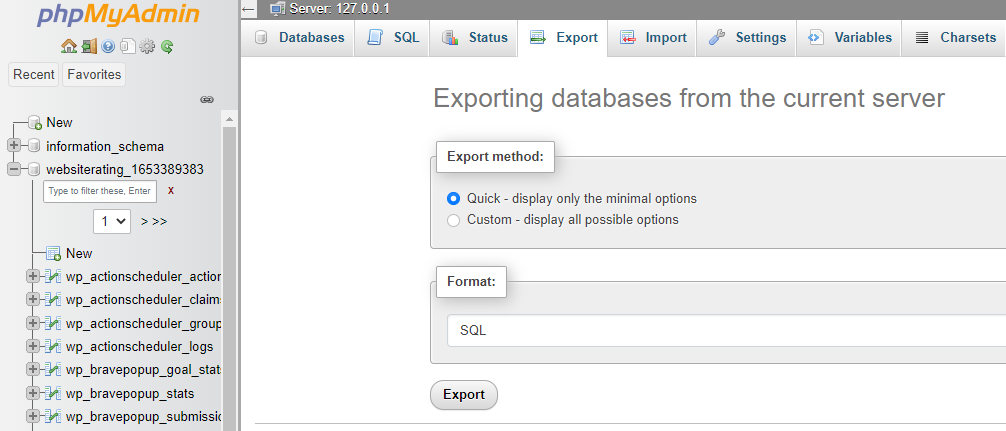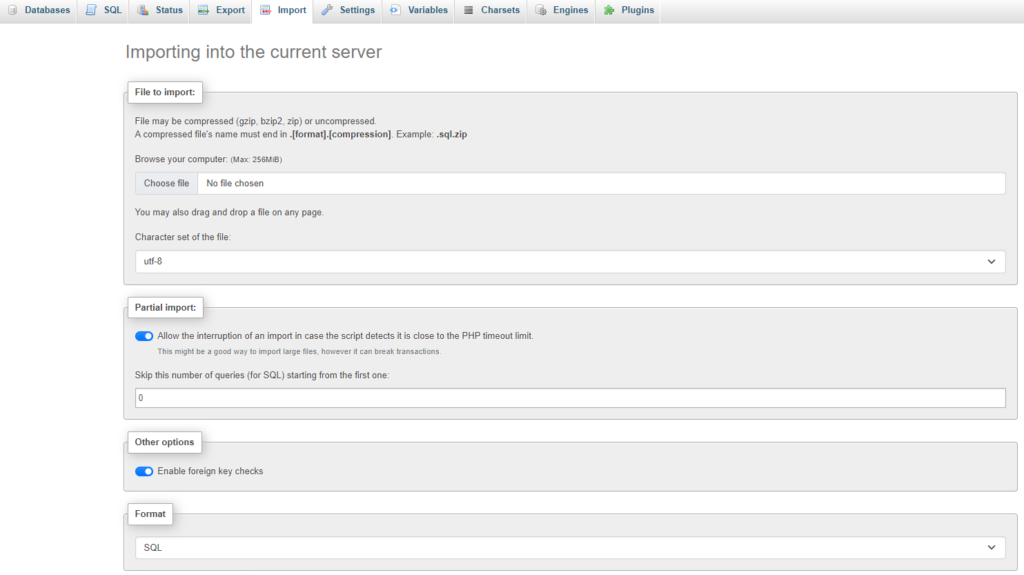If you’re reading this article, chances are you want to change your web hosting provider. Maybe your site has outgrown what they can offer, or you’re unhappy with their customer service, or maybe you just want to try something new.
And hey, sometimes things just don’t work out.
The good news is, that changing website from an old to a new web hosting provider is absolutely possible.
Making a change and migrating a website from one host to another can sometimes be a bit tricky, but this guide will show you how to switch web hosts quickly and easily!
Summary: How to change your web hosting provider?
- If you’ve decided to migrate your website to your new web host by yourself, you can follow my step-by-step guide to completing this process.
- Fortunately, DIY website migration is generally not necessary. To attract new clients, most web hosting companies will offer a free website migration.
- If your new web host doesn’t do site migration, that still doesn’t mean that you have to do it yourself. You can look into hiring a freelancer or service to migrate your website to its new host.
Guide to Moving Your Website from One Host to Another
Moving your website to a new host isn’t an inherently difficult process, but it does involve a lot of steps that have to be completed carefully for your site migration to be successful.
If you’re planning to migrate your website yourself, be sure to follow these instructions carefully.
First: Back Up Your Site!
I can’t say this strongly enough: before you switch to a new web host, make sure you back up your site!
A website backup is essentially a copy of all of the data that comprise your website at the current moment.
Many web hosts offer daily or weekly backups for your site, and these act as a kind of insurance against any damage (hacking, malware attacks, etc.) that could occur.
You may be able to switch your site to its new web host easily and without any trouble, but why take the risk?
If something goes wrong, valuable data could be lost, and you might even have to rebuild your website from scratch. Yikes!
So before you mess with your hosting, make sure you’ve done a recent backup.
DIY Web Hosting Migration

Without further ado, let’s take an in-depth look at how to transfer your website to a new web host by yourself.
1. Sign Up With a New Hosting Provider
First, choose a new web hosting provider and sign up for a subscription.
There are tons of great web hosting companies out there, and with a little research, you should be able to find the right fit for your site. For beginners, SiteGround or Bluehost are good and popular choices.
2. Back Up and Save All Files
If you already have a website, chances are you know how to conduct backups (your old web host may even conduct these automatically).
To save your website’s files, you’ll need to first create a folder on your desktop to save your website in.
It’s a good idea to label this folder with the date, so you’ll be able to tell later which version of your website is saved in that folder.
3. Use an FTP to Download Your Site’s Files
Then, you’ll need to download FileZilla Client. FileZilla is a file transfer protocol (FTP) that works with all operating systems including Windows, Mac, and Linux.

Once you’ve downloaded FileZilla Client, you may need to make a new FTP account with your current hosting provider to allow FileZilla to access your website.
However, some web hosting companies don’t require this step and simply allow you to use your current account’s login details.
Then, open FileZilla Client and enter your domain name, username, and password into the “Host” field.
Enter the number 21 into the “Port” field, then hit “Quickconnect.”
At this point, you should be able to see a screen that looks like your hosting portal on the right and your desktop files on the left.
Select your website files, and drag them to the left into the dated folder you created for your website.
You should be able to see a progress bar that will let you watch as your website downloads, and you’ll get a pop-up message when downloading is complete.
You’ll also be able to see your website’s files in your desktop folder.
4. Export Your Website’s Database
If your website does not have a database, then you don’t need to complete this step and you can skip ahead to step 6 (check with your current hosting provider if you’re not sure).
Websites without a lot of dynamic content or frequent changes generally don’t have a database.
However, if your website does have a database, you’ll need to export it. Since MySQL is the most common type of database, we’ll go over how to export a MySQL database.

- First, go to your current hosting account and locate the phpMyAdmin app. This is the tool that allows MySQL databases to be exported, and you should be able to find it in your current hosting account’s control panel under “Databases.”
- Choose the correct database for your website from the dropdown list on the left.
- Click “Export”
- Click “Go”
- Finally, find the exported database (saved as an SQL file) on your desktop and drag and drop it into the same file where your website is saved.
And that’s it! You’ll also need to import your database into your new web hosting control panel, but we’ll get into how to do that next.
5. Import Your Database
Now that you’ve downloaded your database (if you have one), you’ll need to transfer it to your new hosting account.

- Open your new account and find “Databases.”
- Click on the “myPHPAdmin” app.
- Under your username on the left, you should see a “+” symbol. When you click on it, you should be able to see all databases saved on your computer.
- Click on the new database. You should see a message that says “No tables found in database,” but don’t panic: this is a good thing.
- In the top menu, go to the “Import” section and click the “Choose file” button.
- Now you should be able to choose the SQL file your website’s database is saved in (its name will appear next to the “choose file” button).
- Without changing any of the other fields on the page, click “Go.”
And you’re done! When the upload is complete, you’ll see a new screen with a message that says, “Import has been successfully finished.”
6. Modify and Upload Your Website
Now that your website’s database has been uploaded (if you have one), you’re ready to upload your website’s files.
However, if your website has both files and a database, then there’s a small extra step you’ll need to complete before you can upload your website’s files to your new web host.
Because your website’s files will need to sync with its database in order for your website to work, you’ll need to edit a small portion of the file’s code.
No need to panic; this sounds difficult, but it’s actually fairly straightforward, as long as you do it carefully. Different CMS platforms will have slightly different steps for doing this, which you will have to look up individually.
For our purposes here, we’ll outline how to edit your file’s codes in the popular CMS platform Drupal.
To demonstrate, your database is called “mynewdatabase,” your username is “WR2022,” and your password is “websiterating.”
- Go to the file “settings.php.”
- Use Ctrl+f to search the term “$databases.”
- Enter the details for your new database. The three lines under “$databases” should read:
‘database’ => ‘mynewdatabase’
‘username’ => ‘WR2022’
‘password’ => ‘websiterating’
If you’re using a different content management system, such as WordPress, Joomla, or Magento, you’ll need to look up how to make these changes.
Once you’ve edited your files and everything is synced, you’re ready to upload your website’s files to their new home. To upload your website, we’re going to use FTP again.
First, you have to create an FTP account with your new hosting provider. To do this:
- Go to the “Files” section of your new hosting account’s dashboard and click on “FTP accounts.”
- Enter a new username and password. Make sure you write down your new username and password as well as the port number (which is usually 21). You’ll need all of this information later.
After you’ve made an FTP account in your new hosting dashboard, you’ll need to sync FileZilla with this account. You can do this in exactly the same way you did with your previous hosting account (see step 3 for instructions).
Finally, you’re ready to upload your website’s files. Just like before, you should be able to see your desktop files on the left and your website’s dashboard on the right.
Move your website’s files into the folder labeled “public_html,” taking care not to alter or combine any files or alter their original configuration in any way.
7. Check to See That It Works
There are many steps involved in manually migrating a website to another host, so it’s important to go in and check that everything has gone smoothly and your website is working in its new home.
It’s especially important to do this now before your website is published and any errors become public (and potentially more difficult to fix).
Pretty much every web host will have an option to view and test your website before it goes live, but exactly how this works differs from host to host.
Some will generate a temporary URL for you to view your website from, whereas others will have a staging environment where you can play around with and change your website while viewing it.
No matter how you test it, it’s on you to make sure that every detail is correct and to your liking before publishing your website.
8. Update Your DNS
Finally, you’ll need to update your DNS settings. DNS (domain name system) connects your domain name to your website.
And you’ll need to make sure that your DNS settings are updated to direct traffic to your new host rather than your old one.
Although there are some variations in this process depending on where you’ve registered your domain name, you’ll likely need to know the nameservers of your new web hosting provider.
To find these, check either their website’s “General Information” section or the email they sent you when you first signed up with them.
Once you’ve found your web host’s nameservers, you’ll have to check with your current domain registrar to find the procedure for changing your website DNS (because this depends entirely on your registrar, we can’t really provide a general guideline here).
Bear in mind that while your DNS settings are changing, your website will likely experience a few hours of downtime.
Use Your New Web Host’s Free Site Migration Service

If the idea of undertaking the process of transferring your website by yourself makes you nervous, you’re in luck: almost every web hosting company offers free site migration when you sign up.
After all, why wouldn’t they? They want your business, and they want to make it as easy as possible for you to sign up and get started with their web hosting service.
When looking for web hosting companies, check to see if they include “free migration” or “free site migration” in their list of features.
If they do, make sure that your website is compatible with their migration policy.
For example, the web hosting company SiteGround offers free site migration for WordPress sites specifically.
DreamHost also offers free migrations for WordPress sites through a simple plug-in solution.
If the web host you want to sign up with doesn’t offer free site migrations, or if it isn’t obviously listed, it’s worth it to call or email them and ask directly if this is something they can assist you with.
Again, companies want your business, and they want to make their product as attractive (and easy) as possible for you.
There’s no harm in asking, and having your new web host assist you in migrating your website to a new web host can make your life much easier.
Use a Plugin (WordPress Sites Only)
WordPress is a versatile CMS, and there are plugins that can help you get the most out of your website.
There are WordPress website migration plugins automatically backup your site and handle transfers, preventing downtime during migrations.
Here are some of the best, both free and premium, plugins that can be used to backup your site, export its files and database on your old web host, and migrate and import everything on your new web host.
- BackupBuddy is a premium WordPress plugin to backup, restore, and migrate WordPress sites.
- UpdraftPlus is a premium plugin for backing up and restoring WordPress-powered websites.
- Migrate Guru is a free plugin that is fast and simple to use to move a WordPress site between web hosts.
Use a Service or Freelancer

A potential third option to consider is using a service or freelancer to handle your hosting migration for you.
Website migration specialists generally offer their services on popular freelancing sites like Fiverr and Upwork.
Because freelancers can set their own prices (either hourly or as a flat fee), the cost of hiring a freelancer will vary but generally range between $10-$100 an hour.
You shouldn’t break the bank when hiring someone to migrate your website, but it’s worth remembering that cheaper isn’t always better.
You want someone who will do the job carefully and correctly, and you should be prepared to pay for quality accordingly.
You may also see people offering their skills as domain migration specialists, meaning they specialize in migrating a website from one domain name to another.
There are also platform migration specialists who handle site migration from one CMS platform to another (for example, from WordPress to Joomla).
These are not the same, of course, but you can still reach out and inquire if they have experience with changing web hosts as well – they’ll likely have the necessary experience to help.
You can also hire an agency or service to migrate your website for you, but this will very likely cost more than hiring a freelancer. As such, it’s best to explore your other options first.
If you don’t have the time or technical know-how to migrate your site yourself, first reach out to your new web host and see if they can handle it for you.
If not, then check out reputable freelancers.
Summary
After you’ve done the research and chosen a new web hosting provider, the easiest way to migrate your website to its new host is to let them handle it.
It’s become pretty standard in the industry for hosting companies to offer free and/or assisted website migration, and even if your chosen web host doesn’t directly say that they offer this service, you should call and ask.
If your new web host absolutely won’t help you, then you have two options: either follow the instructions I laid out to migrate your website yourself by searching Google for ‘how to change hosting’ or ‘how to change website hosting’ or hire a freelancer or agency to do it for you.
It may take a little time and effort, but your website will soon be up and running on its new hosting platform.
List of web hosting services we have tested and reviewed:
